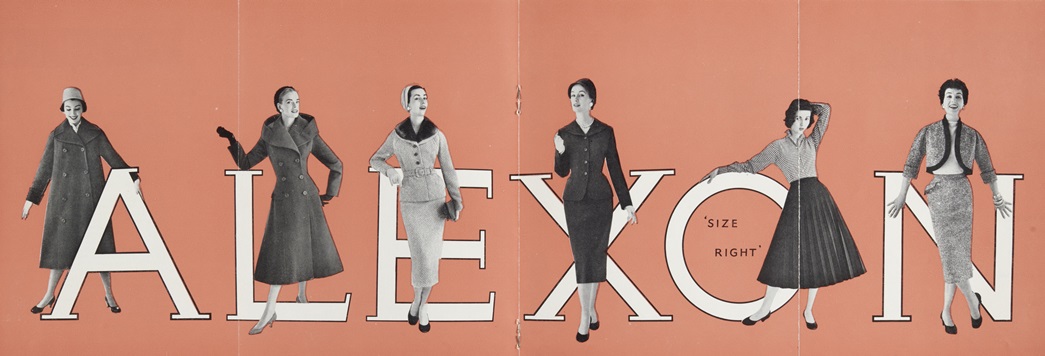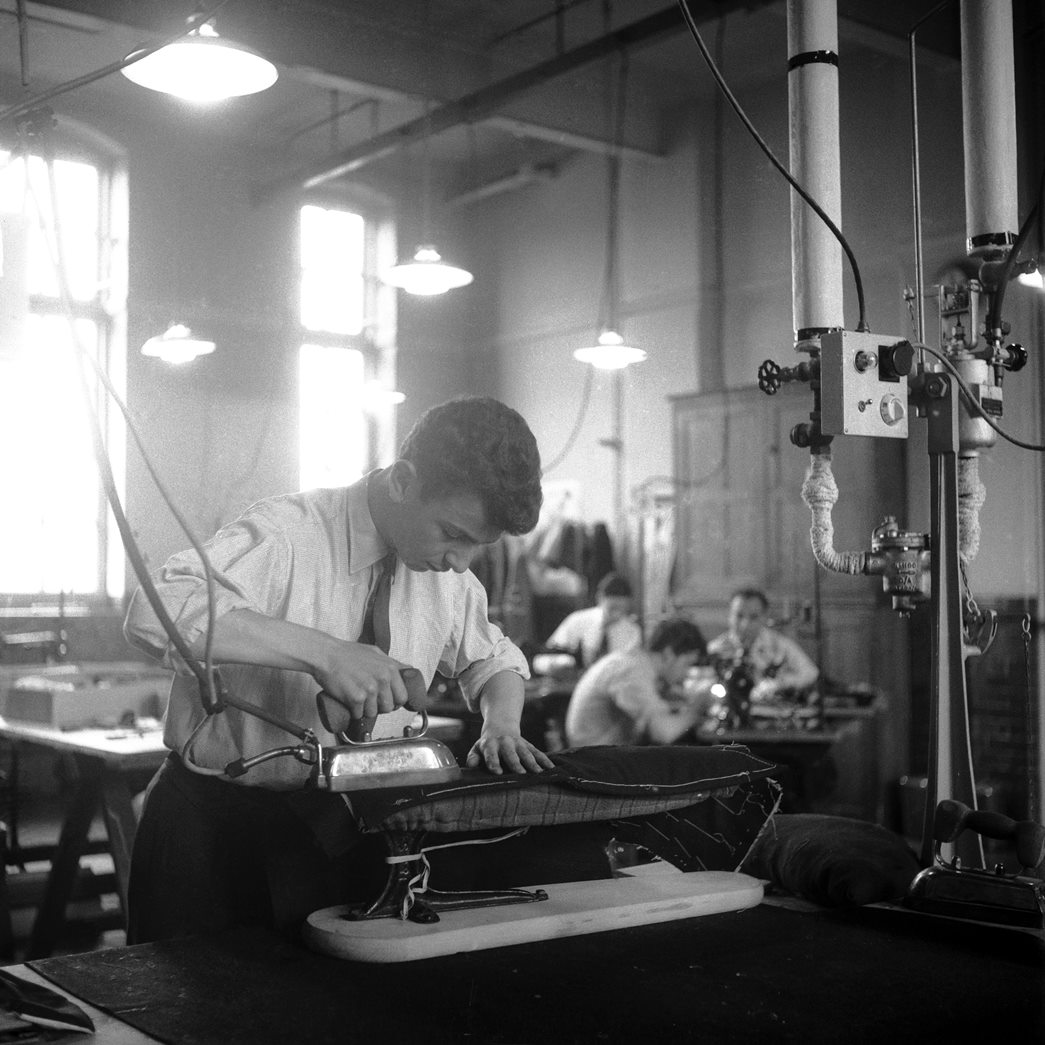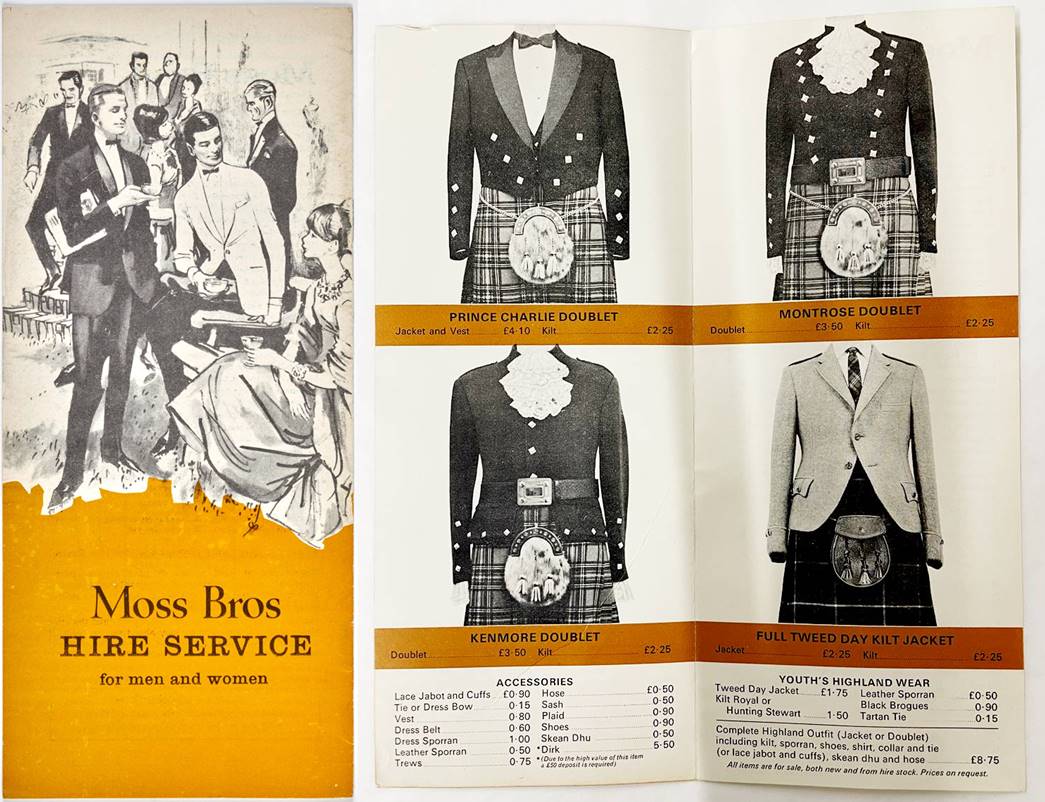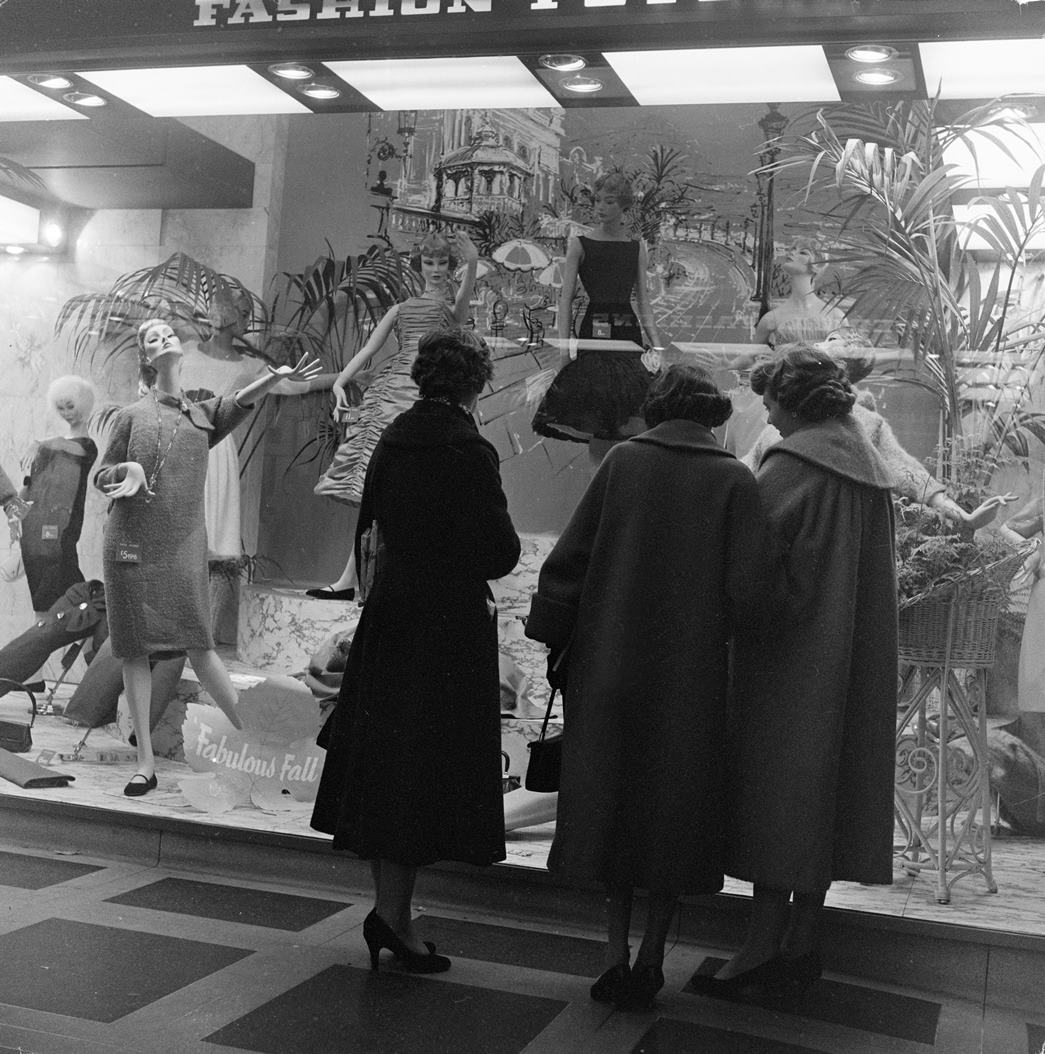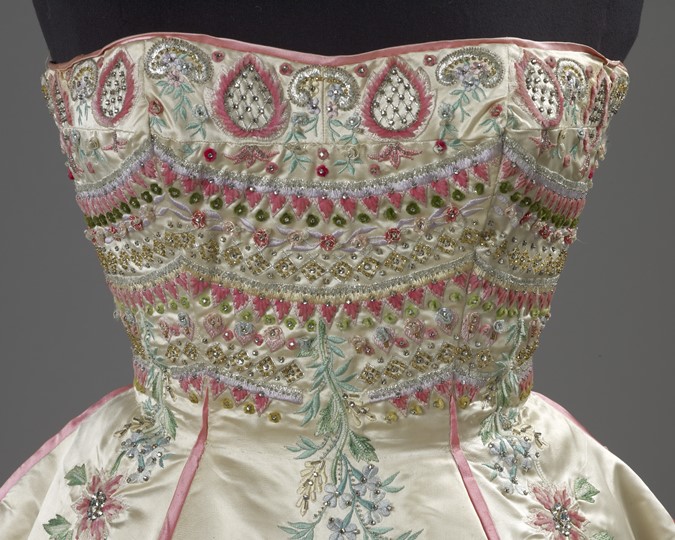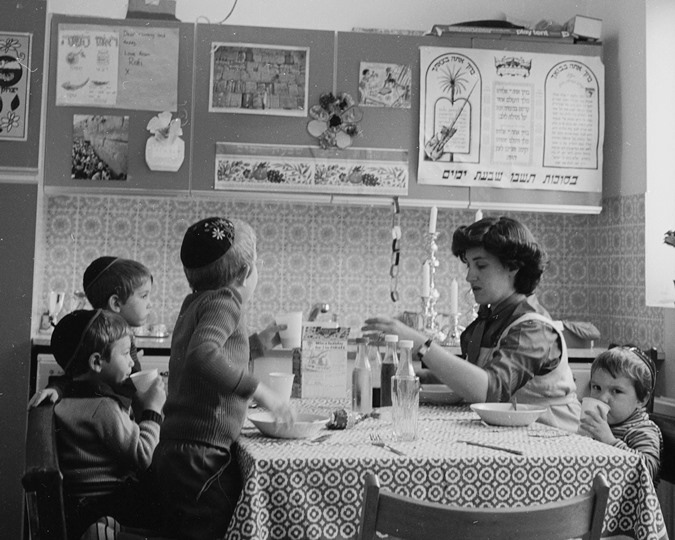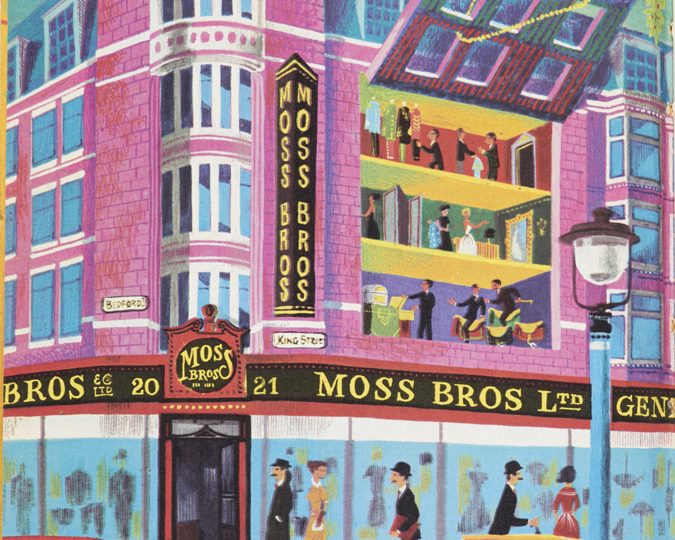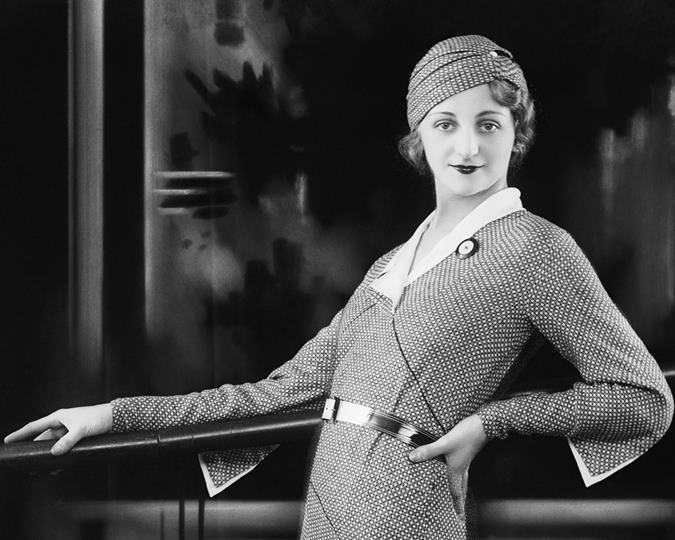In the 19th century, Jewish businesses and skilled Jewish makers played a vital role in making London a centre for manufacturing fashionable goods. However, from the 1940s onwards, many of them struggled to retain their base in the capital. Here’s why.
London is one of the world’s major fashion capitals. It has a reputation for edgy, daring design that draws talented creatives from all over the globe to study and work here. But while the fashion industry is important to London’s economy and reputation, very few of the clothes and accessories designed or sold in the city are actually made here.
This was not always the case. For much of the 20th century, London had a thriving manufacturing economy that produced vast quantities of clothes, shoes and accessories. These were sold across the UK and internationally.
East London as a manufacturing centre for ready-to-wear
Jewish businesses and skilled Jewish makers played a vital role in making London a centre for manufacturing fashionable goods. In the 19th century, Jewish firms were pioneers of a new type of ‘ready-made’ clothing, where customers could purchase finished clothes in a range of standard sizes rather than having clothes custom made. In 1829, Elias Moses and his son Isaac founded E. Moses & Sons, selling ready-made tailored menswear from the firm’s vast premises in Aldgate and Minories in East London. They were soon joined by other Jewish firms, such as Hyam & Co. In the 1890s, East London became a centre for ready-made womenswear too, when Jewish migrant Morris Cohen founded the UK’s first purpose-built factory for ready-made women’s tailored clothing in Spital Square.
Cohen’s business provided a starting point for many other womenswear manufacturers in the East End, who either made clothing for Cohen or rented workshop space from him. These businesses include some of the most significant British ready-to-wear makers of the 20th century, such as Steinberg & Sons, makers of Alexon clothes; Ellis & Goldstein, makers of Elgora- and Eastex-branded clothing; and Morris Mantles, maker of the well-known Windsmoor fashion brand.
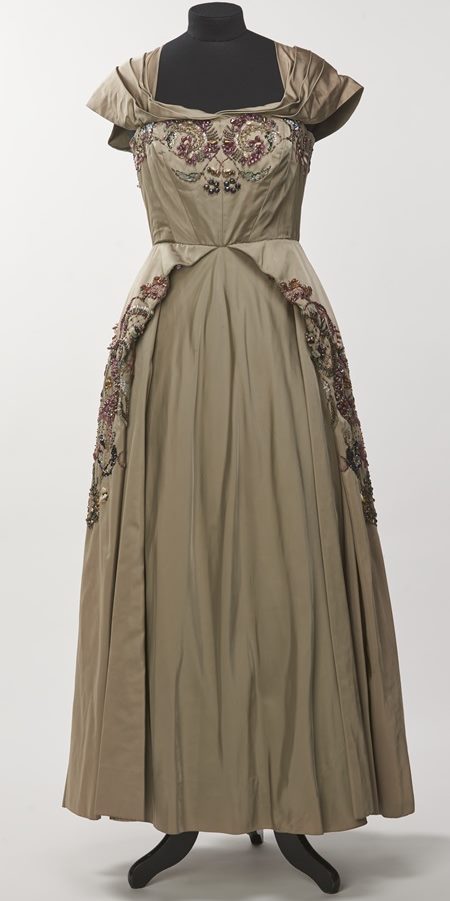
A Peggy Lewis evening dress, c1950. (ID no.: 2002.155/1)
London fashion and ‘wholesale
couture’
Different types of clothes were made in different areas of the city. London’s West End has traditionally been associated with bespoke and couture fashion manufacture. In the 20th century, Jewish people contributed their skills to these sectors, including bespoke dressmaker Peggy Lewis who made beautiful embellished special occasion wear. The types of skilled labour that was required by bespoke and couture manufacturers enhanced other parts of the fashion trade too.
In the 1930s and 1940s, the area around Soho became an important site for the production of a new type of high-end fashion, called ‘wholesale couture’, which combined beautifully designed ready-to-wear with hand-finished details.
The scale of the fashion industry and its economic importance to London in the middle decades of the 20th century is captured in the government’s Census of Production in 1935, which records nearly 90,000 people working in the production of clothing in London. These workers made 45% of the clothing produced in the UK.
Leaving London and the Second World War
Yet, by the late 1930s some fashion manufacturers were already beginning to leave London. Land was expensive in the city, and space for expanding to bigger and newer factories was limited. This made it hard for London-based producers to use the latest manufacturing technology and processes, causing them competitive disadvantage. The UK government had also started to provide incentives for businesses to relocate to areas that had been designated as economically deprived, such as South Wales, Cumberland and Tyneside. It was these reasons that prompted Steinberg & Sons to move much of their production from London’s East End to South Wales in 1939.
The impact of bombing in London during the Second World War provided an added incentive for businesses to leave the city in the early 1940s. The homes of many workers were damaged or destroyed, causing them to relocate and find new jobs. The impact of this can be seen in census returns. For example, the number of garment workers living in Stepney in the East End fell from 30,282 in 1931 to just 9,535 in 1951. Many factories were bombed too, and the total compensation claim for bomb damage from London’s garment industry amounted to £100 million, approximately £3.8 billion in today’s money. Faced with the disruption and uncertainty of daily bombing raids, major manufacturers sought new homes. L. Harris Ltd moved the bulk of its production from Goswell Road in Clerkenwell to new factories in Halifax, Merseyside and Birkenhead during the war, and Moss Bros moved its trouser manufacturing from the East End to suburban Dorking.
London’s strengths and changing trends
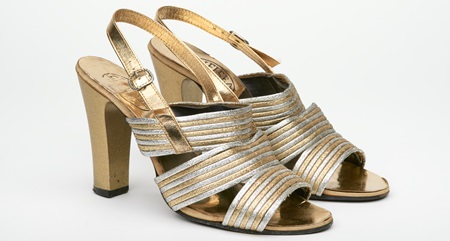
A pair of Chelsea Girl evening sandals. (ID no.: 89.264/26a-b)
For other fashion manufacturers, the benefits of London’s highly skilled workforce, and being close to centres of fashion education, retail and design outweighed the lure of moving elsewhere. Plenty of factories and garment workers remained in the city and contributed to its growing reputation in the 1960s as a centre for exciting youth fashions. In the 1950s, retail entrepreneur Bernard Lewis used local East End manufacturing firms to make clothes for his Lewis Separates shops, which later became Chelsea Girl and then River Island. He valued how these manufacturers were able to respond quickly when he needed to restock popular garments that had sold out. Irvine Sellar also appreciated the benefits of having a flexible, responsive and local manufacturing base in London in the 1960s. He owned a large clothing factory in Neasden that he used to stock his Carnaby Street boutiques.
Despite these benefits, by the 1970s it was increasingly clear that London manufacturing was struggling to keep up with changing trends and the skills of garment workers elsewhere. The London County Council recognised that a lack of investment in training and new technologies was a problem. It tried to correct this with new types of education and planning incentives. However, it was not enough to prevent retailers like Cecil Gee looking for new manufacturers in other countries, like Italy, to provide the latest styles they needed to stock their stores.
London’s previous manufacturing strength – its flexible network of medium-sized ready-to-wear manufacturers – started to become its weakness. It became cheaper for fashion brands to have this type of clothing produced internationally, such as in Hong Kong, where wages were lower, than to make clothes in London. This trend accelerated after the fall of the Berlin Wall in 1989, when Eastern European clothing manufacturers became more accessible to London fashion businesses. The growing dominance of large international fashion retailers and brands in the 1990s added further pressure to London manufacturers, as their large-scale operations made the logistics of shipping textiles and finished clothing all over the world cheap and efficient. As a result, the percentage of clothes sold in Britain that were imported, rather than made here, increased dramatically from 57% in 1993 to 92% in 2001.
A new chapter?
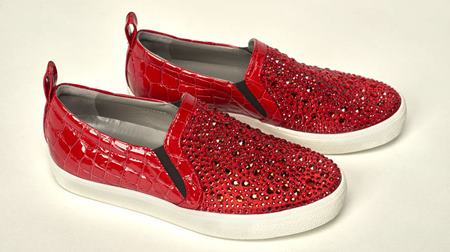
A pair of GINA trainers, made in London. (ID no.: 2021.122/1)
Over the last 50 years, London has transitioned from a city with a reputation for making fashionable goods to a city whose fashionable reputation is more symbolic. Today, London is known as a place that produces fashionable ideas through its world-class fashion education, museums, journalism and designers. But fashion manufacture has not totally disappeared from the city.
In recent years, there have been efforts to support small scale, skilled production of high-end fashion products in London. As consumers become more aware of the environmental and ethical impacts of their fashion choices, many people want to know who made their clothes, and local production allows people to trace where their fashionable purchases come from. London’s high property and living costs mean these products can be expensive and are often bespoke, but they demonstrate the continuing flexibility and longevity of London’s fashionable making cultures and hint that there may yet be a new chapter in the history of London fashion manufacture to come.
Want to find out more about Jewish London fashion makers? Book your tickets to ‘Fashion City: How Jewish Londoners shaped global style’ here. The exhibition will run at the Museum of London Docklands until 7 July 2024. You can also buy our book that accompanies this major exhibition from our online shop, and at a discount when bought alongside your exhibition ticket.
Header image: Moss Bros’ Solent Sailingwear leaflet. (©Moss Bros)
Subscribe to our fashion newsletter to read more stories from our collection, and see upcoming events and exhibitions.








